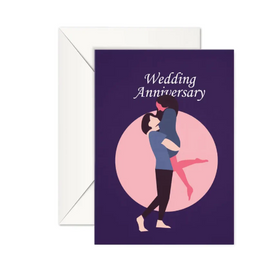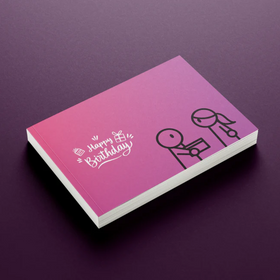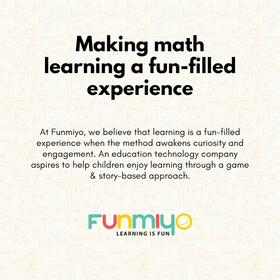on all orders

Flipbook Animation: A Unique And Engaging Way To Tell Stories
In this article, we will discuss what flipbook animation is, its history, and how it has evolved over time. We'll explore different techniques used by animators today and look at some inspiring examples of projects created using flipbooks. Finally, we'll talk about why this type of animation is so popular among creators and audiences alike.
So if you're curious about the world of flipbook animation or just want to learn more about this innovative form of storytelling, keep reading! You may find yourself inspired to try it out or discover new possibilities within your own work.
What Is Flipbook Animation?
Flipbook animation is a unique and engaging way to tell stories. It's an art form that has been around for centuries, but it's recently taken on new life with the rise of digital technology. Flipbook animation involves flipping through pages of drawings or photos in order to create a moving image – similar to when you flip through the pages of a comic book quickly. This technique can be used for both commercial and personal projects, such as creating short films, advertisements, music videos, or even just simple illustrations.
The process behind flipbook animation requires careful planning and skillful execution. Creators must first decide what story they want to tell and how best to illustrate it before starting out. Once the storyboard and basic sketches are complete, it’s time to begin drawing each page individually by hand – something that takes dedication and patience! After all the frames have been drawn, they can then be scanned into a computer where editing tools like Adobe Photoshop offer more control over color correction, effects, soundtracks and other special features.
This type of animation allows artists to express themselves freely while also captivating their audience in ways traditional static images often cannot achieve. The end result is an emotional connection between creator and viewer which may not otherwise exist without this creative medium. With its ability to bring people together through storytelling, flipbook animation remains one of the most popular forms of visual communication today.
Advantages Of Flipbook Animation
Flipbook animation offers many advantages. It is an excellent choice for those who want to tell stories in a unique, engaging way. First off, it can be used to create visuals quickly and easily. With just some paper and pen or pencils, you can get started on creating your own flipbook animations without any complicated software or equipment. This makes the process of telling stories with this medium much more accessible than other forms of animation.
Additionally, flipbook animation allows for creative freedom that cannot be found with other types of animations. You are free to draw whatever characters and backgrounds come to mind, adding interesting details as you go along. Since there are no limitations on how long each page should take, you have complete control over how fast or slow the story progresses. Furthermore, since everything is done by hand rather than relying on digital technology like computer programs, mistakes can be corrected quickly and efficiently at any point in time.
All this adds up to make flipbook animation an ideal choice for anyone looking to share their stories in an exciting way - one that viewers will find both captivating and enjoyable!
How To Create A Flipbook Animation
Creating a flipbook animation is an exciting process that can bring your story to life. It requires the right tools and techniques, but the end result is worth it.
To begin, you'll need paper or cardstock, a pencil, eraser and some colored markers or crayons. You'll also need access to a scanner or camera if you plan on creating digital versions of your animations as well. The first step in making any flipbook animation is sketching out each frame of the story. Start by drawing simple stick figures for characters and then add more detail such as clothing, facial features and props based on what's necessary for the scene. Don't forget about background elements too! As you progress through each page, think about how the action flows from one scene to the next - this will help with pacing when animating later on.
Once all of your frames are drawn it’s time to start assembling them into an animation sequence. For physical copies, use glue or tape to attach each page together at one edge so that they fan out like a book when flipped through quickly. If you're using digital software such as Adobe Animate CC (formerly Flash), import all of your images into separate layers and arrange them chronologically before adding in effects such as motion tweening and sound clips to give your work even more character. With either method, practice flipping through the pages until everything looks smooth - this is key to getting great results!
By taking these steps you can create engaging stories filled with movement that will captivate audiences both young and old alike. Flipbook animation offers endless possibilities for creative expression so why not give it a try?
What Kind Of Stories Can You Tell With Flipbook Animation?
Flipbook animation is a creative and interactive way of storytelling. It's an art form that can be used to tell any type of story, from complex narratives to simple jokes. In this article, we'll explore what kind of stories you can tell with flipbook animation.
Flipbook animation allows you to create unique visuals without investing in expensive equipment or software. You don't need special skills either - anyone can make their own flipbooks! Whether it's a funny cartoon or a sequence of images telling a dramatic story, the possibilities are endless when it comes to creating your own animations.
The key thing about making flipbook animations is understanding how they work. Each page should contain one frame that depicts an action or scene in the overall story. By flipping through these frames quickly, it creates the illusion of movement and brings the story alive for viewers. With careful planning and some practice, anybody can use this technique to craft engaging stories that will captivate audiences.
Using flipbook animation as a medium for storytelling offers limitless potential both in terms of creativity and style. From comedic shorts to serious dramas – there’s no limit on what stories you can bring to life with this method!
Using Flipbook Animation For Corporate Video Production
Flipbook animation is a great way to bring corporate videos to life. It can be used in multiple ways, from helping explain complex concepts and ideas, to showcasing products and services, or even just adding an extra level of engagement for audiences. The creative possibilities are endless with this unique style of storytelling.
Using flipbook animation for corporate video production has several advantages over traditional methods. For one thing, it’s much faster than the usual process of filming physical objects or actors – you simply need to create your images on paper or digitally and input them into the software. In addition, it offers more flexibility when it comes to editing choices; you can quickly make changes without having to reshoot scenes if something isn’t quite right. And finally, as each frame is hand-drawn, there's potential for greater authenticity in terms of visuals as well as creating a more personalised connection between the audience and the product being advertised.
It’s worth considering how flipbook animation could add value to your next corporate video project. With its speed, flexibility and distinctiveness, it provides a powerful tool that will help you stand out from other companies while captivating viewers throughout the story.
Benefits Of Using Flipbook Animation In Education
Flipbook animation is a unique and engaging way of storytelling. In addition to its use in corporate video production, it can also be used for educational purposes. Let's take a look at the benefits that come with using this form of animation in education.
Firstly, flipbook animation offers an interactive learning experience which students find enjoyable. This encourages them to actively engage with the material they are being presented with, thus allowing them to absorb more information effectively. With visuals accompanying text-based content, students are able to have a multisensory approach towards their learning journey – making complex topics easier to understand and comprehend.
Moreover, through the use of flipbook animation, educators can create videos which capture the attention of their audience right away. Its smooth transitions between frames turn stories into something truly captivating; encouraging viewers to stay engaged until the end of the clip. Additionally, as these animations don't require much technical equipment or skillset – anyone can create one - making them easily accessible for both teachers and learners alike.
In short, there are many advantages that come with using flipbook animation in education - from providing an interactive learning experience to capturing the attention of your audience quickly and efficiently. It goes without saying that flipping through pages has never been so fun!
Tools And Techniques For Creating Flipbook Animation
Making flipbook animation doesn’t have to be difficult. There are multiple tools and techniques available for creating engaging stories through this unique medium.
First off, it's important to understand the basics of how a flipbook works. It involves drawing individual frames that will make up an animated sequence when flipped quickly in succession. Each frame should show subtle changes from the one before it so that the action looks smooth when seen together as a single looping film.
Once you've got the basic technique down, there are plenty of software programs out there that can help you create stunning animations with ease. For instance, Adobe Animate allows users to work digitally on their projects by giving them access to powerful features such as tweening and onion skinning. Additionally, there are many free online tutorials available which provide step-by-step instructions on how to use these tools effectively.
Finally, if you're looking for an easy way to get started with flipbooks, why not try making your own? All you need is some paper and a few pens or pencils – no fancy equipment necessary! You could also look into purchasing pre-made templates which come with all the elements needed for high quality animation sequences.
No matter what level of experience you may have with this type of storytelling, there are multiple ways to craft captivating visuals using flipbook animation.
Get your hand on custom flipbooks by Dudus Online.
Examples Of Flipbook Animation
As we've seen, flipbook animation is a unique and engaging way to tell stories. Now let's take a look at some examples of this type of animation in action.
From classic animations like Mickey Mouse to modern pieces created with Flash or After Effects, flipbook animations have come a long way over the years. Whether you're creating something for an audience of one or 1 million people, these types of animated stories can be captivating and memorable experiences.
Flipbook animation has become increasingly popular among storytellers looking to create innovative visuals that capture their audience’s attention. It provides artists with the freedom to express their creativity in ways not possible with other forms of media – from stop motion sequences to hand-drawn illustrations, anything goes! So if you’re interested in exploring the potential of storytelling through animation, why not give flipbook animation a try?
Challenges Of Flipbook Animation
Flipbook animation is a creative and captivating way to communicate stories, but it does come with its own set of challenges. Creating flipbooks requires a high level of skill, as the artist needs to create several frames that accurately capture each transition in movement. This can be especially difficult if the story utilizes complex action sequences or intricate facial expressions.
Another challenge is being able to produce enough pages in time for the desired deadline. Flipbook animators need to draw many images at once while still maintaining consistency throughout their work. It also takes an immense amount of patience and dedication to complete a flipbook project without making any major mistakes along the way.
Considering all these obstacles, it's no wonder why creating quality flipbooks is often considered one of the most challenging forms of animation out there today. With careful planning and practice though, anyone can become great at this craft - if they're willing to put in the effort!
Tips For Making A Successful Flipbook Animation
Creating a successful flipbook animation can be daunting. It requires the right story, visuals and sequencing to keep the audience engaged. Fortunately, there are tips one can use to make their project come together beautifully.
When crafting your flipbook animation, it’s important that you have an overarching vision of what you want to accomplish with the project. Have a clear plan for how each page should look and how they should transition from one another. This will help ensure that everything flows well from beginning to end. Additionally, consider adding sound effects or music to add more character and emotion to your story.
Finally, practice makes perfect! Don’t expect for things to turn out perfectly on the first try – take time to experiment with different techniques until you get the desired result. With patience and perseverance, you'll be able to create an engaging flipbook animation that people won't soon forget!
Conclusion
Flipbook animation is a unique and engaging way to tell stories. It has many advantages over other types of animations, such as the ability to create low-budget videos with minimal resources. While it can be challenging to learn the tools and techniques for creating flipbook animations, there are plenty of tutorials available online that will help you get started. In addition, examples of successful flipbooks can provide inspiration when starting your own project. With careful planning and creative storytelling, you can use flipbook animation to make an impactful video that captures viewers’ attention. Flipbook animation offers endless possibilities for telling captivating stories in a visually appealing way; whether it’s for corporate production or personal projects, this form of animation should not be overlooked!





Leave a comment